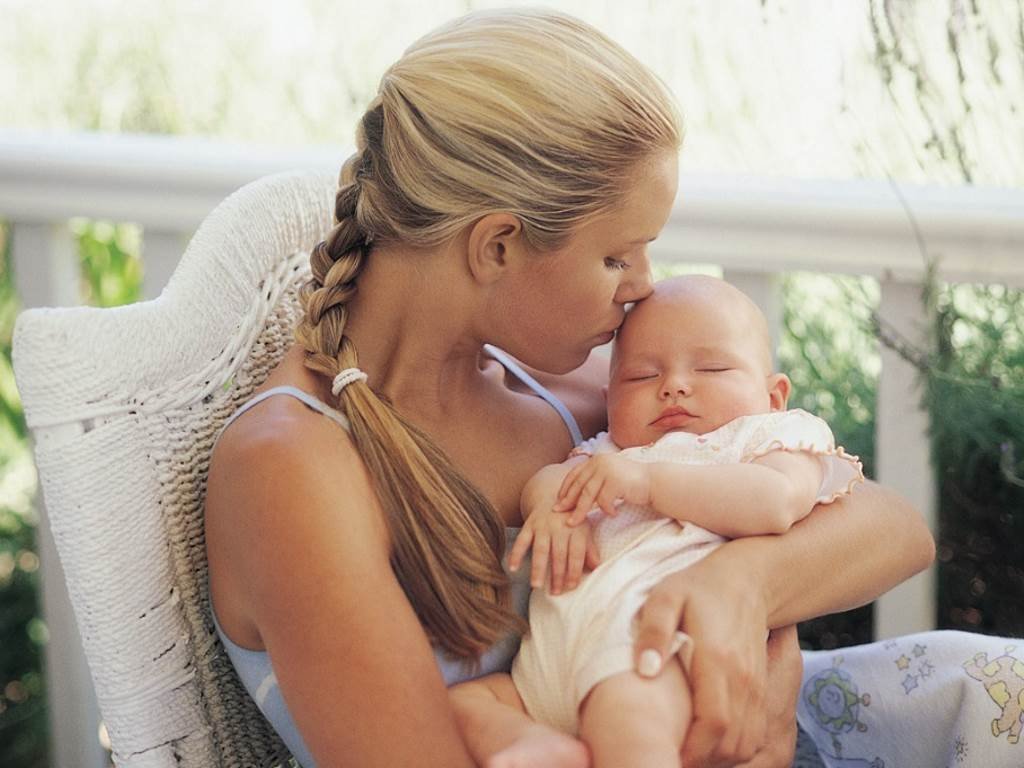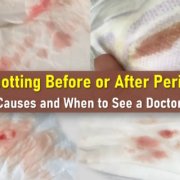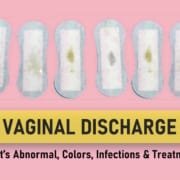Postpartum Care, Recovery & Complications: A Guide for New Mothers
The postpartum period is the six weeks after giving birth when a mother’s body returns to her pre-pregnancy state. After childbirth, mothers experience some physical changes and symptoms, but they are usually mild and temporary, with severe health issues being rare. Healthcare providers usually set up follow-up visits either at their office or at the mother’s home to ensure her well-being during this period.
Common Complications after Childbirth
The most common complications following childbirth include:
- Excessive Bleeding (Postpartum Hemorrhage) This can occur soon after delivery or up to 6 weeks later. It’s when a mother loses a significant amount of blood. Healthcare providers do their best to minimize bleeding by helping the uterus contract and, if needed, giving medications to stimulate contractions.
- Infections of the Uterus Sometimes, the uterus can get infected after childbirth. This is closely monitored by healthcare providers.
- Bladder and Kidney Infections Women are more prone to these infections because of proximity to the reproductive system. Healthcare staff encourage regular urination to prevent these infections.
- Breast Infection Breast infections can occur, especially if a mother is breastfeeding. Proper guidance is provided to address any issues.
- Problems with Breastfeeding Sometimes, mothers face difficulties with breastfeeding. They receive support and advice to help them overcome these challenges.
- Depression Postpartum depression is a concern for some mothers. Healthcare providers are attentive to emotional well-being and can offer support or treatment if needed.
Phases of Post Partum Period
Postpartum period has three distinct but continuous phases. The initial postpartum period has been termed the “fourth stage of labor”.
The initial or acute period involves the first 6-12 hours postpartum. This is a time of rapid change with a potential for immediate crises such as postpartum hemorrhage, uterine inversion, amniotic fluid embolism, and eclampsia.
The second phase is the subacute postpartum period, which lasts 2–6 weeks. During this phase, the body is undergoing major changes in terms of hemodynamics, genitourinary recovery, metabolism, and emotional status. Nonetheless, the changes are less rapid than in the acute postpartum phase and the patient is generally capable of self-identifying problems. These may range from ordinary concerns about perineal discomfort to peripartum cardiomyopathy or severe postpartum depression.
The third phase is the delayed postpartum period, which can last up to 6 months. Changes during this phase are extremely gradual, and pathology is rare. This is the time of restoration of muscle tone and connective tissue to the prepregnant state. Although change is subtle during this phase, it is important to remember that a woman’s body is not fully restored to prepregnant physiology until about 6 months postdelivery. Some changes to the genitourinary system take much longer in resolving, and some may never fully revert to the prepregnant state, including stress urinary incontinence, incontinence of flatus or feces, uterine prolapse, cystocele, and rectocele.
First 6-12 hours Postpartum
Immediately after childbirth, a mother is closely monitored for at least an hour. If anesthesia was used during delivery or any complications arose, monitoring may extend for several hours. Typically, this monitoring takes place in a well-equipped recovery room with access to essential medical equipment, oxygen, and intravenous fluids.
During this period, healthcare providers monitor the mother’s pulse rate and temperature. Normally, within the first 24 hours, the mother’s pulse rate, which increased during pregnancy, begins to decrease towards normal, and her temperature may slightly rise, eventually returning to normal in the following days. After the initial 24 hours, recovery generally progresses swiftly.
Hospital staff are dedicated to minimizing pain and the risk of bleeding and infection for the new mother.
Bleeding
Preventing excessive bleeding is a top priority. After the delivery of the placenta (afterbirth), nurses may periodically perform abdominal massages to aid in uterine contraction and prevent excessive bleeding. When necessary, oxytocin, a drug that stimulates uterine contractions, is administered via injection into a muscle or intravenous infusion until the uterus contracts sufficiently. If significant blood loss occurs during and after childbirth, a complete blood count is conducted to check for anemia before discharge.
Urination
Urine production often increases temporarily following childbirth. To prevent bladder infections, hospital staff encourage new mothers to attempt regular urination, at least every four hours. This practice helps avoid overfilling the bladder, as bladder sensation may be reduced after childbirth. Occasionally, if the mother is unable to urinate on her own, a temporary catheter may be inserted into the bladder to facilitate urine emptying. In rare cases, an indwelling catheter, which remains in the bladder for an extended period, may be necessary.
Bowel Movements
New mothers are encouraged to have a bowel movement before leaving the hospital. However, due to short stay at the hospital, this expectation may not always be practical. In cases where a bowel movement hasn’t occurred within three days, doctors may recommend stool softeners or laxatives to prevent constipation, which can exacerbate hemorrhoids. Stool softeners are especially crucial if the rectum or anal muscles were torn during delivery. Opioids, occasionally prescribed to alleviate severe pain after a cesarean section, can exacerbate constipation. Therefore, when opioids are necessary, healthcare providers use the lowest effective dose to mitigate these effects.
Diet and Exercise
New mothers can resume a regular diet as soon as they desire, sometimes shortly after delivery. Encouragement to get up and walk as soon as possible is also provided. For women who underwent vaginal delivery, exercises to strengthen abdominal muscles can begin as early as one day post-delivery. In the case of cesarean delivery, which constitutes major surgery, women should refrain from exercising until they’ve fully recovered, usually within approximately six weeks. The resumption of pre-pregnancy exercise routines is possible after receiving approval from their doctor during the post-delivery visit.
Vaccines and Immune Globulin
Before discharge from the hospital, mothers are administered the rubella vaccine if they haven’t previously received it. Ideally, the tetanus-diphtheria-pertussis (Tdap) vaccine should be administered during each pregnancy, preferably between weeks 27 and 36. If the mother hasn’t received the Tdap vaccine during her current or previous pregnancies, nor during adolescence or adulthood, it should be administered before discharge, regardless of whether she intends to breastfeed. Additionally, family members who will have contact with the newborn should receive the Tdap vaccine at least two weeks before interacting with the baby to reduce the risk of pertussis transmission. For mothers who have never had chickenpox or the varicella vaccine, the first dose of the chickenpox vaccine is typically administered after delivery, with the second dose following 4 to 8 weeks later. Depending on a woman’s vaccination and health history, other vaccines may be recommended by healthcare providers. In cases where a new mother has Rh-negative blood and the baby has Rh-positive blood (a condition known as Rh incompatibility), she receives Rho(D) immune globulin via injection into a muscle within three days of delivery. This medication conceals any red blood cells from the baby that may have entered the mother’s circulation, preventing the production of antibodies that could pose risks in subsequent pregnancies.
Before Discharge from Hospital
Before discharge, a thorough examination is performed, and regular follow-up visits are scheduled to monitor the mother’s health and recovery. The timing of these visits depends on the type of delivery and any complications that may have arisen. Typically, mothers leave the hospital within 24 to 48 hours after vaginal delivery or within 96 hours after cesarean delivery. Sometimes, they can even be discharged as early as 6 hours after an uncomplicated vaginal delivery. The mother is provided with information about expected body changes and necessary self-care measures during this postpartum period.
Transitioning from Hospital to Home
As new mothers leave the hospital and return home, they may continue to experience some changes and discomfort. Here’s what to expect:
Vaginal Discharge
New mothers will have a vaginal discharge that starts in the hospital and continues at home. Hospitals provide pads to absorb this discharge, which initially appears bloody for about 3 or 4 days. It then changes to a pale brown color and, after approximately 2 weeks, becomes yellowish-white. This discharge can persist for up to 6 weeks post-delivery. About a week or two after delivery, the scab where the placenta was attached in the uterus may come off, resulting in vaginal bleeding, which can be absorbed using sanitary pads. Tampons should only be used if approved by the healthcare provider. If heavy bleeding is a concern, it’s important to contact a doctor.
Medications
Mothers who are not breastfeeding can safely take pain relief medications. For breastfeeding mothers, acetaminophen and ibuprofen are relatively safe pain relievers. However, many other drugs can appear in breast milk, so it’s essential to consult with a healthcare provider if medications are needed.
Genital Area Discomfort
The area around the vaginal opening may be sore, and urination can cause a stinging sensation. Soreness and swelling can be exacerbated by tears in the perineum or episiotomy repairs. In the first 24 hours after delivery, ice or cold packs can help alleviate pain and swelling. Anesthetic creams or sprays may also provide relief. Later on, washing the vaginal area with warm water a few times a day can reduce tenderness, and warm sitz baths can be soothing. If sitting is uncomfortable, a doughnut-shaped pillow can help.
Hemorrhoids
Pushing during delivery can cause or worsen hemorrhoids. Pain from hemorrhoids can be eased with warm sitz baths and the application of gel containing a local anesthetic.
Breast Engorgement
For mothers who are not breastfeeding, wearing a snug-fitting bra can help elevate the breasts and suppress milk production. Applying ice packs and taking analgesics can provide relief until milk production naturally decreases. Avoid manually expressing milk, as this signals the body to produce more milk. For breastfeeding mothers, nursing regularly, wearing a comfortable nursing bra around the clock, and, if necessary, expressing milk in a warm shower or using a breast pump between feedings can help manage breast engorgement. If the breasts are overly swollen, expressing milk just before breastfeeding may facilitate the baby’s latch.
Mood Changes
It’s common for new mothers to experience mood changes, often referred to as “baby blues,” during the days following delivery. Feelings of sadness, irritability, moodiness, anxiety, and sleep disturbances are typical and usually subside after 7 to 10 days. However, if these symptoms persist for more than 2 weeks or significantly impact the ability to care for the baby or carry out daily activities, it’s essential to consult a healthcare provider. In such cases, postpartum depression or another mental health disorder may be a concern.
Postpartum Period at Home
As new mothers transition from the hospital to home, here’s how to care for yourself during this period:
Resuming Daily Activities
You can gradually resume your normal daily activities when you feel ready. Maintaining a healthy diet and incorporating regular exercise into your routine can aid in your recovery and overall well-being.
Resuming Sexual Activity
You can resume sexual activity at your comfort and desire, but it should be comfortable. If any of the following conditions apply, it’s advisable to wait until the affected area heals:
- If your delivery caused tearing.
- If you had an episiotomy.
- If you underwent a cesarean section.
Personal Hygiene
While you can take showers soon after a cesarean delivery, avoid baths until you’ve fully healed. When washing the genital area, always go from front to back. If the area is sore, using a spray bottle of water or taking sitz baths can provide soothing relief. It’s best to avoid douching until you’ve discussed it with your doctor during your first post-delivery visit.
Vaginal Care
After either vaginal or cesarean delivery, refrain from inserting anything into the vagina for at least 2 weeks. Steer clear of strenuous activities and heavy lifting for about 6 weeks. Sexual activity should also be avoided for this period. Incision sites, especially after a cesarean section, should be cared for like other surgical incisions. Typically, you can resume showering 24 hours after surgery without scrubbing the incision site. Baths should be avoided until the wound has fully closed, and any staples or sutures have been removed. Keep the incision clean and dry. If you notice increasing redness or drainage from the incision, inform your doctor. Some pain around the incision site may persist for a few months, and numbness may last even longer.
Uterine Contractions
The uterus, still enlarged after delivery, will continue to contract over the next few weeks. These contractions can be irregular and at times painful, particularly when breastfeeding. Breastfeeding triggers the release of oxytocin, which stimulates both the flow of milk (known as the let-down reflex) and uterine contractions. Usually, by 2 weeks post-delivery, the uterus returns close to its normal size. However, it may take several months for your abdomen to regain its pre-pregnancy shape, even with exercise. While stretch marks don’t disappear, they may gradually fade over time, sometimes taking up to a year.
Breastfeeding
Healthcare professionals recommend exclusive breastfeeding for at least 6 months, followed by continued breastfeeding with the introduction of other foods. However, if you cannot or choose not to breastfeed, bottle-feeding is a suitable alternative. Positioning your baby correctly during feeding is essential to prevent nipple soreness and damage. If your baby latches improperly and irritates your nipple, gently use your thumb to release their lower lip. To detach your nipple from the baby’s mouth, insert your finger to break the suction. After breastfeeding, you can allow your nipples to air dry or pat them gently. Applying 100% lanolin to your nipples can relieve soreness and provide protection. While breastfeeding, you may experience breast milk leakage, for which cotton pads can be used. Avoid plastic bra liners, as they can irritate the nipples.
Dietary and Caloric Needs While breastfeeding
it’s important to increase your caloric intake by approximately 300 to 500 calories per day. Ensure you consume enough vitamins and minerals, including calcium. A well-balanced diet, including dairy products and leafy greens, coupled with your prenatal vitamin containing at least 400 micrograms of folate, should suffice. Staying hydrated is crucial to maintain an adequate milk supply. If you have specific dietary requirements, consult your doctor regarding additional vitamin and mineral supplements, particularly if you are a vegetarian. If you consume seafood while breastfeeding, choose low-mercury options.
Family Planning (Birth Control)
Pregnancy can occur soon after childbirth, so it’s recommended to use birth control when you resume sexual activity. Ovulation can resume as early as 4 to 6 weeks after delivery for non-breastfeeding mothers, even before the first period. Breastfeeding mothers typically start ovulating and menstruating later, closer to 6 months post-delivery. Nonetheless, it’s essential to discuss contraception with your doctor. Various options are available, and the choice may be influenced by whether you are breastfeeding or not. Methods such as tubal ligation or intrauterine devices (IUDs) can be initiated shortly after delivery or during a cesarean section. While birth control pills or patches containing estrogen and progesterone should be avoided until milk production is well-established, progesterone-only contraceptives, medroxyprogesterone acetate injections, progestin implants, or IUDs can be used. Non-pharmaceutical options like condoms and diaphragms can also be considered. Diaphragms should be fitted after the uterus has returned to its normal size.









